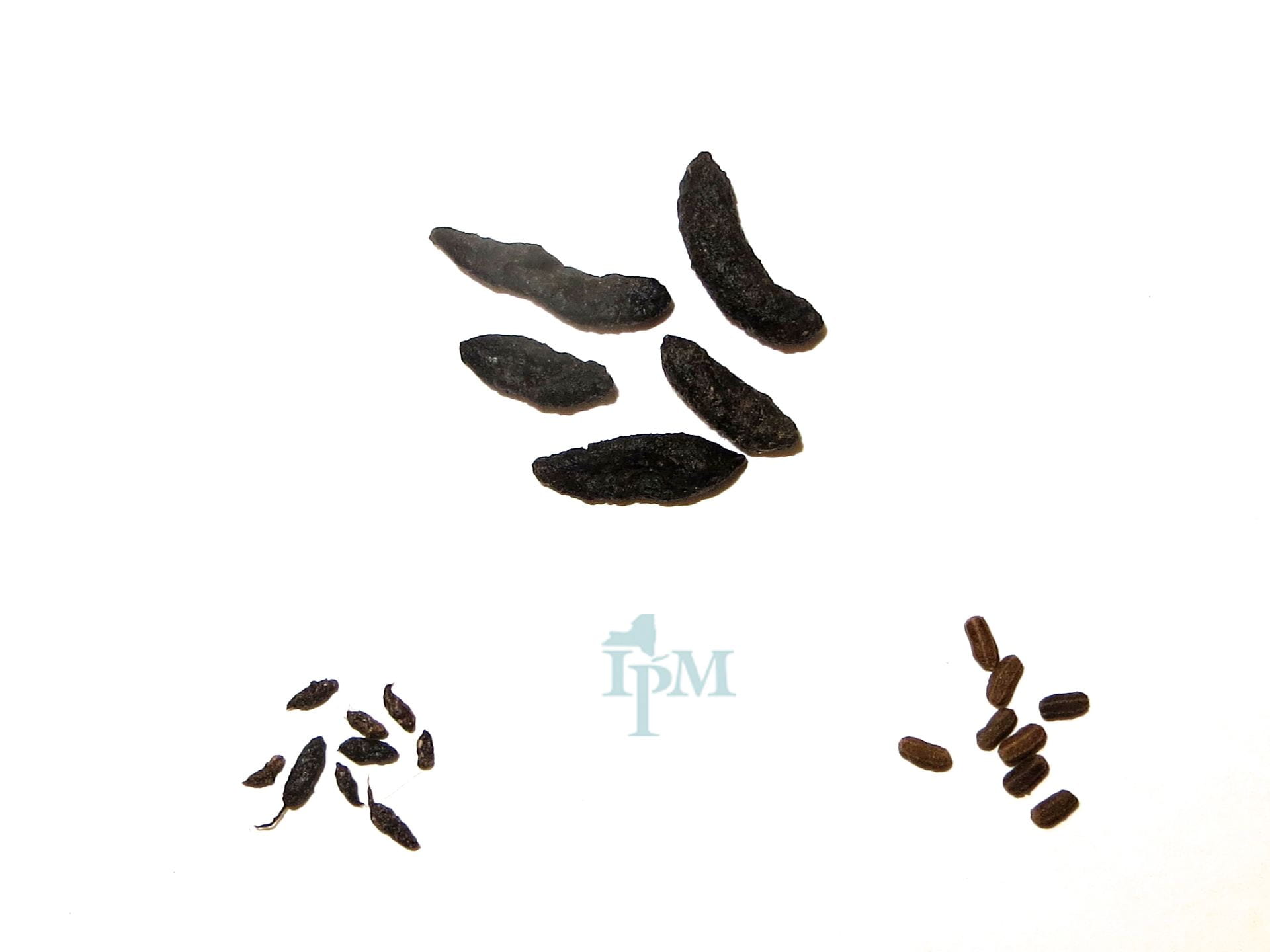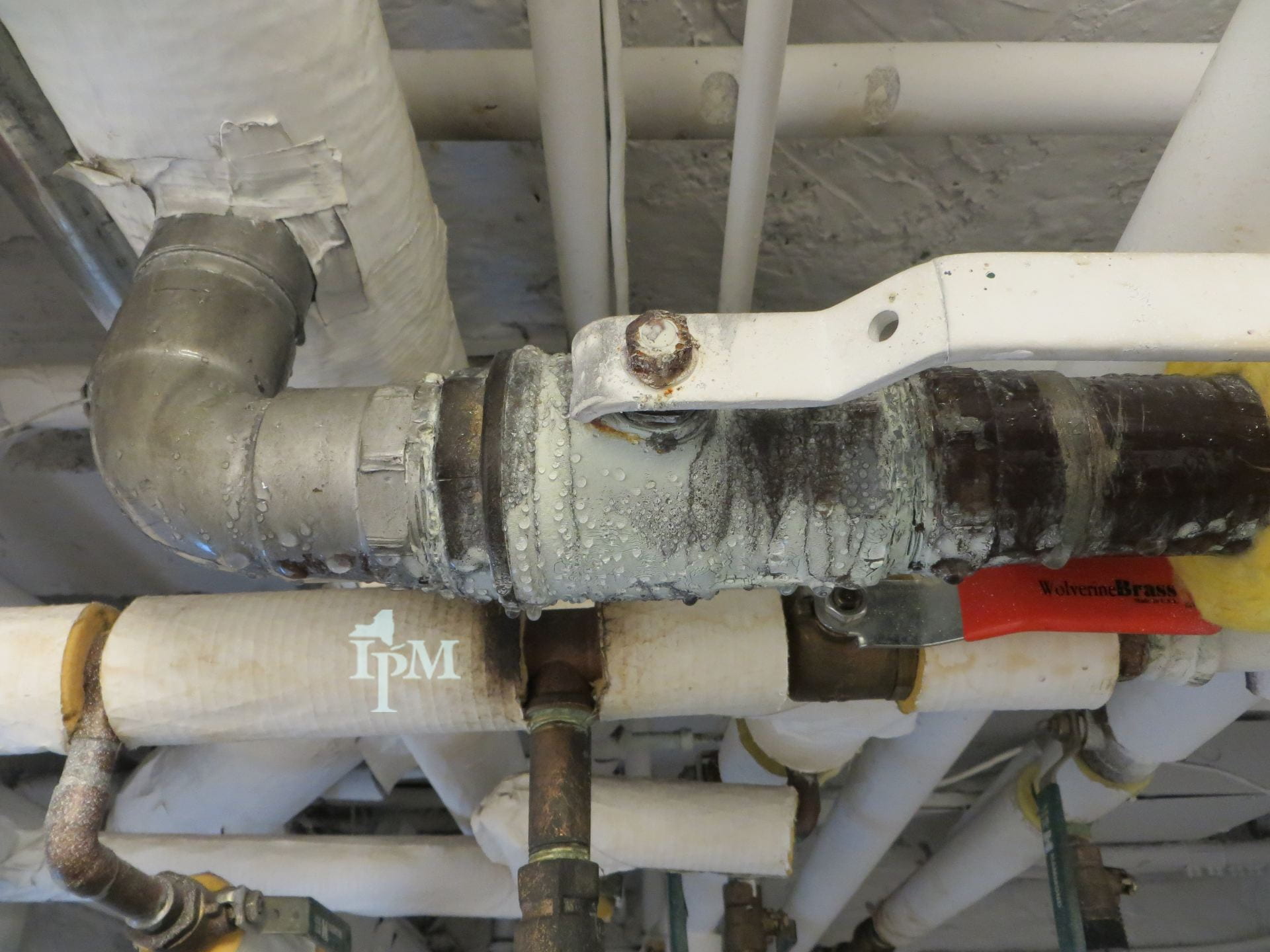While pests like bedbugs are inactive waiting out school re-openings, the old standards like cockroaches and rodents can use quiet buildings to their advantage if habitat needs are met. Food, water and shelter are available in areas such as storage rooms, kitchens, boiler rooms and crawlspaces. If your building is currently unoccupied, pest activity can go unnoticed by staff, especially if there is a disruption in pest control operator visits.
OUR NUMBER ONE SUGGESTION NOW IS…SCOUTING. Building maintenance remains (at this time) essential work. Just like in the summer months, buildings without students allow much great opportunity for extensive scouting and cleaning.
LOOK FOR PESTS, PEST ACTIVITY and PEST ENTRY POINTS. The partial inspection list below notes areas that may not be addressed daily during the school year. Now is the time to move large pieces of kitchen equipment in buildings no longer providing meals.

Rat, cockroach, and mouse droppings. Can you identify? (cockroach on the right)
Our Best Management Practices for School IPM website is available to help. For example: Resources for custodial and building maintenance staff. We have at least forty links to online or printable resources for IPM Policies and Protocols, General IPM Resources, Indoor IPM Resources and Outdoor IPM Resources

Here are some videos to help you out:
Signs of rodent infestations in buildings: NYSIPM’s Dr. Matt Frye
Setting snap traps : NYSIPM’s Dr. Matt Frye
Insect monitoring: West Virginia’s IPM Minute: Sticky traps for insects
How to conduct a Pest Assessment in Schools: EPA Webinar
Inspecting a Child Care Facility – Detailed video applicable to all school buildings

Dark areas known as grease marks show consistent routes of rodents. Their greasy fur leaves a trail. Why are they here? Pests rely on water sources such as condensation.
